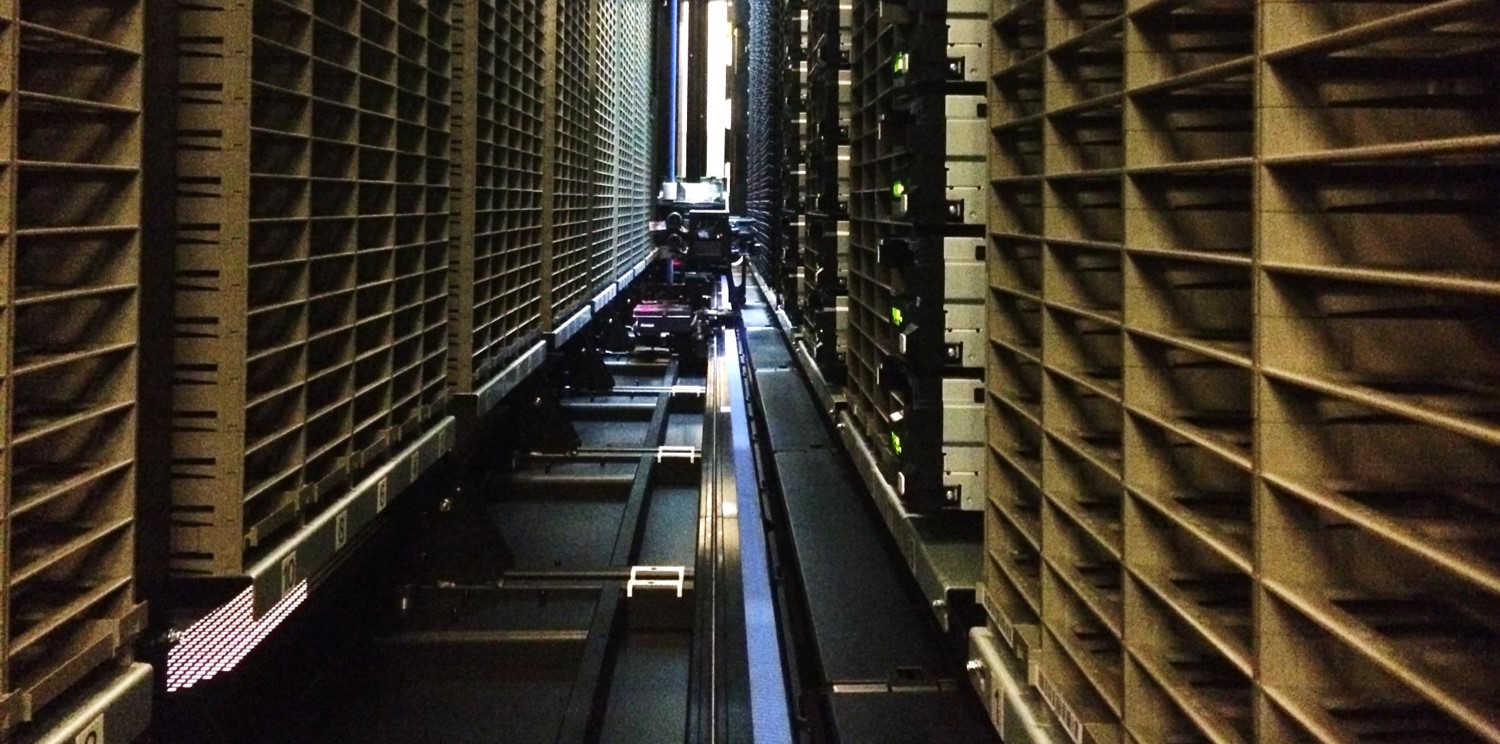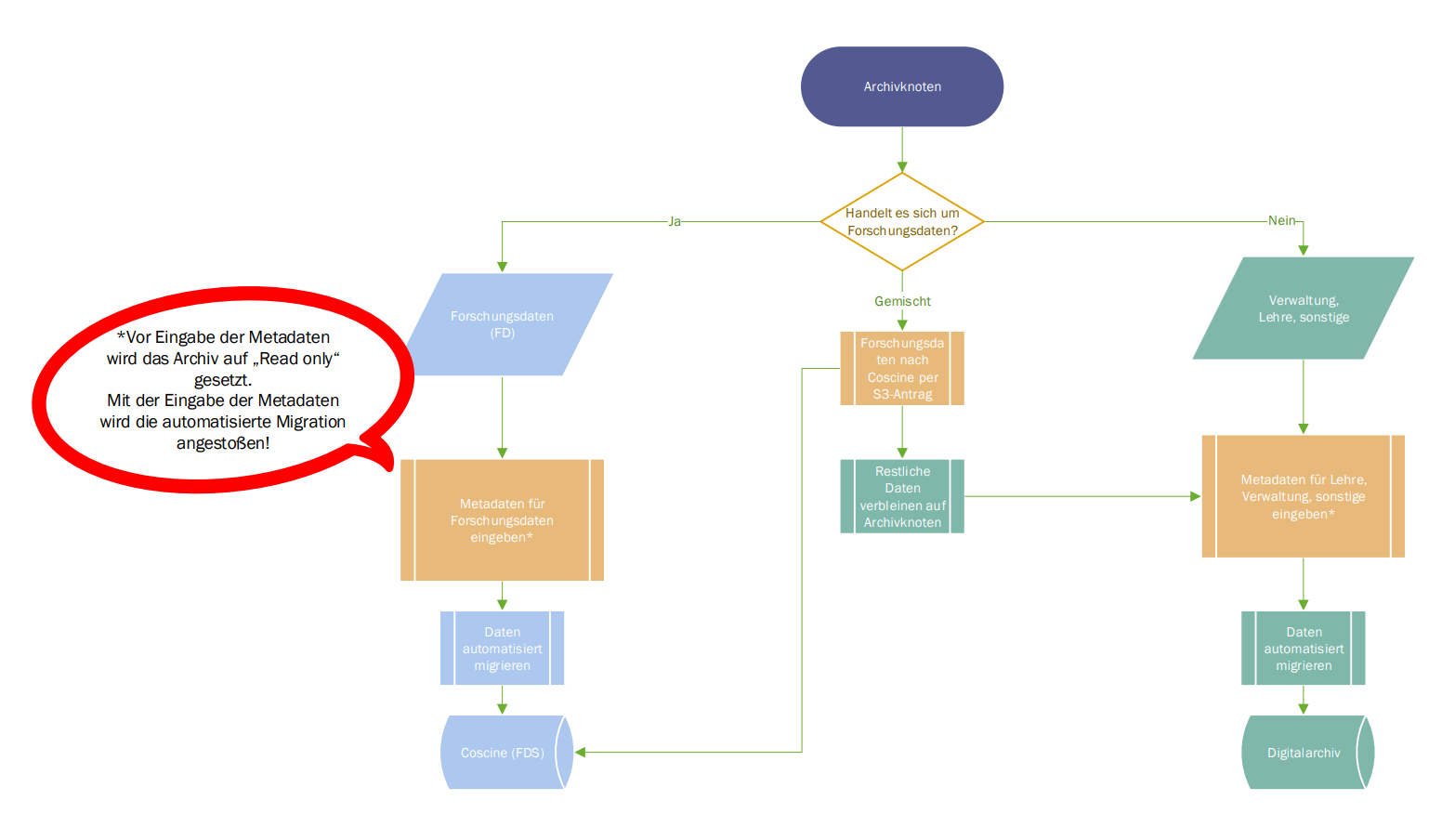
Source: Own illustration
In fall, the archive nodes contained in the archive will be migrated. Until then, however, there is still a lot to do. While work is going on behind the scenes on the front end for the new Digital Archive and for the metadata form, among other things, we are also hard at work getting the new infrastructure up and running. But, for our node contacts, too, preparation is key. For this reason, we call on you to use the opportunity and the time until the migration to sift through archive nodes, prepare them if necessary, or even make the decision to part with data that is no longer needed or needs to be kept. In this article you will learn how to prepare your archive nodes for migration.
Sift and Prepare Nodes
All node contacts will receive an e-mail prompt specific to their node prior to the migration in the fall. The migration is triggered by the node contact entering the metadata. However, before entering the metadata, it is worthwhile to view the archive nodes in advance in order to get an overview of which data should continue to be retained.
These preparations are important! When the migration starts, the archive nodes can no longer be edited. The archive is also set to “Read only” before the call to enter the metadata. This means that changing the node contents is no longer possible from then on. So all preparations, changes etc. should best be done promptly to avoid being pressed for time. Of course, we will inform in time before the “Read Only” operation of the archive.
Research Data or Non-Research Data – That is the Question here
Since the archived data will in future be assigned to the storage destinations Research Data Storage (RDS) and the future Digital Archive, a distinction must be made as to what type of data is actually present. The following graphic (currently available in German only) serves as a decision-making aid:

Source: Own illustration
Answering the question “Is the archived data on the archive node research data?” is central to this process.
The decision-making process includes the following scenarios:
- Yes, my node contains research data.
-> In this case, not much preparation is required. You simply enter specific metadata for research data after the prompt. This will trigger the migration to Coscine. The data will be migrated automatically and stored on the RDS infrastructure.
There is also the option here to migrate data to Coscine independently. To do this, it is necessary to request an S3 resource via the archive migration request form. You can learn how to do that in these instructions.
- No, I do not have research data on my archive node.
-> In this case, you can also wait until the metadata prompt arrives. Then enter the metadata for administrative, teaching, or other data. This will trigger the automated migration of the data to the digital archive.
Of course, preserving data is not black and white either. In case your archive node is a mixed node, you can proceed as follows:
- Jay and ney, my archive node contains both research data and data that belongs in the digital archive.
It is worthwhile to restore the research data from the archive first (see Restoring files and directories from the archive guide) and then move it yourself via Coscine (S3 resource for archive migration guide).
The remaining data shall be left on the archive node. After the metadata is prompted, it is handled in the same way as the data being migrated to the digital archive.
With Metadata to the Final Destination
Shortly before the prompt for metadata, the archive is switched to “Read only”. This is necessary to ensure that no more changes are made to the existing nodes and no new nodes are created. This is the only way to ensure technically and procedurally that all node contacts are informed and receive the node-specific prompt e-mail.
The web form is not only used to enter metadata. Node contacts can also specify here that the node is to be discarded.
Thus, when metadata is entered, not only is data descriptive information deposited, but destinations are also entered. Once the metadata has been entered and confirmed, the archive nodes can be migrated automatically.
We will keep you up to date and inform you about updates around the topic “Archive Migration”.
More information and instructions are available on IT Center Help.
Responsible for the content of this article are Lukas C. Bossert and Nicole Filla.





Hallo liebes Migrations-Team,
vielen Dank für die ausführliche Information. Da das Ganze aber recht komplex ist, würde es mich nicht wundern, wenn da viele gar nichts aktiv machen.
– was passiert in einem solchen Fall, wenn sich jemand zu seiner/ihrer Kennung nicht meldet, wird es trotzdem automatisch migriert (aus meiner Sicht ein Muss) und mit welcher Klassifikation und was als Metadaten ?
– es wäre hilfreich (sorry, wenn es das schon gibt und ich es übersehen habe) ein Beispiel zu haben, was denn da dann in den beiden Fällen als Metadaten abgefragt wird, damit man sich ein besseres Bild machen kann. Insbesondere wichtig für die Nicht-Einzelnutzer wie z.B. z.B. Institutsadmins, die Archivknoten verwalten, die ja auch nicht ewig im Job sind. Beste Grüße aus der Physik, Th.K.
Hallo Thomas,
grundsätzlich sind Archivknoten einem/einer dedizierten Ansprechpartner*in zugeordnet. Alle Knoten werden im Zuge dieser Umstellung migriert. Sofern archivierte Daten nicht eindeutig als Forschungsdaten von den
Ansprechpartner*innen deklariert und dem für Forschungsdaten definierten Zielort zugeordnet werden, erfolgt die Migration in das Digitalarchiv.
Mitunter aus diesen Gründen ist der Prozess für die Migration entsprechend modelliert worden. Sollten darüber hinaus dennoch Knotenansprechpersonen nicht erreicht, bemüht sich das IT Center den/die entsprechende
Rechtsnachfolge zu bestimmen. Sobald der/die Rechtsnachfolger*in bestimmt ist, verliert die ursprüngliche Knotenansprechperson den Zugriff auf den Knoten. Das IT Center ist während der Archivmigration an die
Nutzungsbedingungen für den Service Archiv gebunden. Diese sind hier verlinkt:
https://help.itc.rwth-aachen.de/service/1hrjq9zv52gqa/article/502e7e688f044ad5be84e414ae82aee8/
Hinsichtlich der Eingabe der Metadaten folgen konkrete Beispiele inklusive Screenshots in den nächsten Wochen. Auf jeden Fall werden frühzeitig vor
Migrationsbeginn Informationen zur Eingabe der Metadaten sowie die Dokumentation auf IT Center Help dazu veröffentlicht.
Solltest du darüber hinaus weitere Fragen haben, wende dich gerne an an das IT-ServiceDesk.
Viele Grüße,
das IT Center Blog Team